Successful cyberattacks can cause significant financial losses, legal penalties and long-term damage to your small business’s reputation.
Taking proactive steps to secure systems and safeguard data is the best way to keep operations running smoothly and protect customer trust.
In this article, you’ll learn how to defend against threats and stay safe with actionable cybersecurity tips.
What cybersecurity threats do small businesses need to know about?
Small businesses typically have limited resources and less robust security than larger companies, which can put them more at risk to cyber threats.
To protect your company, you must understand how cybercriminals will target it and then implement the best security and privacy policies.
Here are the most common attack types and what each entails:
-
Phishing. Scammers send deceptive emails or messages to trick employees into giving away sensitive information like passwords or financial data. Phishing attacks are highly targeted and often hard to detect.
-
Ransomware. Hackers lock your systems or data and demand payment (usually in cryptocurrency to avoid identification). Ransomware attacks can shut down business operations and cause massive financial losses.
-
Malware. Malicious software infiltrates your systems to steal data or damage files. It can gain access through infected email attachments, downloads from unsafe websites (which look legitimate to users) or malicious links.
-
Insider threats. Employees (current or former) with access to sensitive data misuse it, intentionally or accidentally. These threats can be difficult to detect since they involve people with legitimate access.
Attacks of all types are becoming more common. Almost three-quarters (73%) of small-to-medium-sized business (SMB) leaders told Identity Theft Resource Center (ITRC) they experienced a breach, cyberattack or both in 2023 – up from 43% in 2022.
Figure 1: Data breaches, cyberattacks or both reported by SMBs
However, only half of the businesses surveyed by ITRC reported trying to prevent future breaches, meaning many remain vulnerable.
Recommended reading
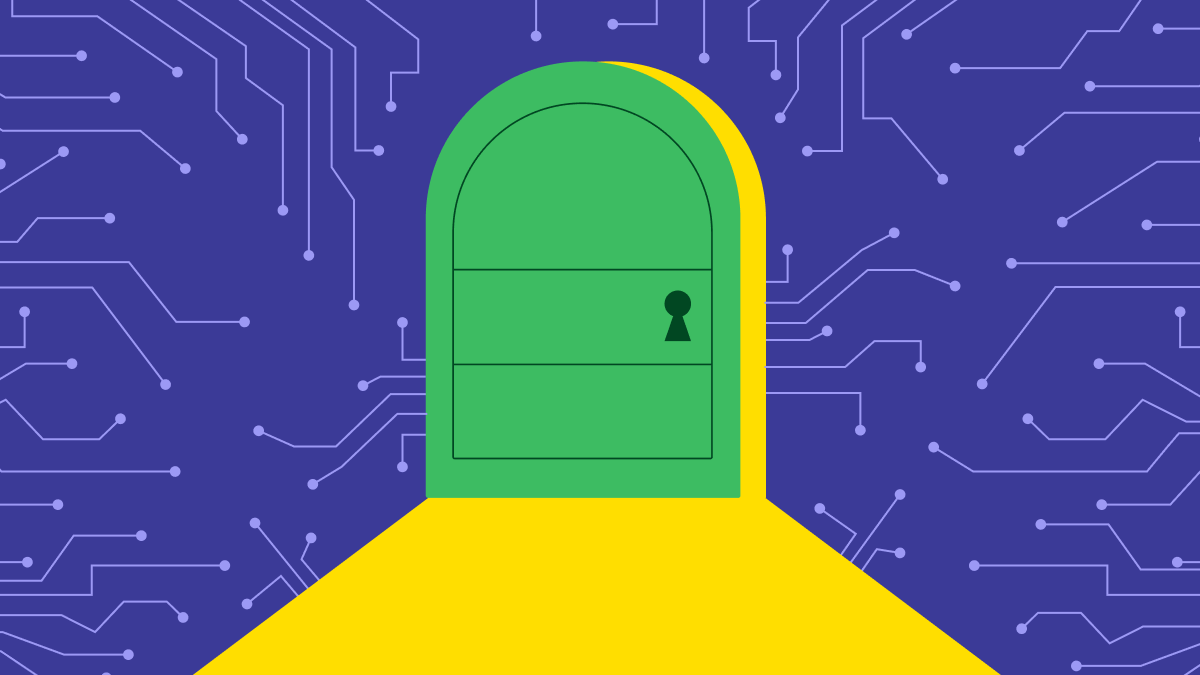
How to get into cybersecurity sales: steps for success
18 cybersecurity tips for small businesses
With so many evolving threats, securing your small business can feel overwhelming. The good news is you don’t need to tackle everything at once.
Here are 18 straightforward ways to tighten your company’s defenses and protect your reputation.
How to build strong cybersecurity foundations
Strong small business cybersecurity starts with simple but effective actions. These tips will help you build solid foundations for safeguarding your data and infrastructure.
1. Build a culture of cybersecurity awareness
Building a cyber-secure company culture in your small business means ensuring all employees understand the importance of staying safe online.
Start by encouraging your team to report any potential security issues immediately. Provide (or arrange) basic cybersecurity training on these topics:
-
Recognizing phishing emails
-
Using secure passwords
-
Avoiding suspicious links or downloads
-
Handling sensitive data safely
Set clear rules for using company devices and networks. For example, stipulate that staff can’t connect company devices to public Wi-Fi networks since they are more vulnerable to breaches than your business’s secured networks – more on how to secure your business’s Wi-Fi later.
Finally, hold quarterly cybersecurity workshops and send regular best-practice reminders. One quick briefing or email on how to spot phishing attempts could prevent a costly data breach.
Download your guide to managing teams and scaling sales
The blueprint you need to find a team of superstars and build a strong foundation for lasting sales success
2. Have a response plan in place
Unfortunately, no matter how many protections you have, cyberattacks can still happen. A response plan will help you act quickly to minimize damage and disruption.
Draft a simple document that covers actionable steps for:
The plan should also detail communication protocols and key contacts (like IT support or legal partners) so everyone can work together to rectify issues more efficiently.
Give team members specific roles to contain the situation. For example, an account manager might contact affected parties while your systems engineer switches off connectivity.
3. Use strong, unique passwords
Using strong passwords is one of the easiest and most effective ways to protect your business.
A strong password includes:
-
Upper and lowercase letters
-
Numbers
-
Symbols (i.e., special characters like $, % and @)
Use different passwords for each account or platform to avoid widespread breaches. If you don’t, a hacker could break into multiple systems after stealing one password.
Use a password manager to create and store strong passwords securely. Encourage employees to log in and update their passwords every three months using popular management tools like LastPass and NordPass.
4. Enable multi-factor authentication
Multi-factor authentication (MFA) adds another layer of security by requiring more than a password to access accounts.
Most apps using MFA require a second verification form, such as an email, a code sent to your mobile device or a dedicated security app. Two-factor authentication (2FA) stops hackers from accessing your accounts even if they have a password.
Enable MFA for all systems where possible. You should be able to protect email accounts, financial platforms and cloud storage.
Here’s how Google verifies user identities with their Gmail addresses:
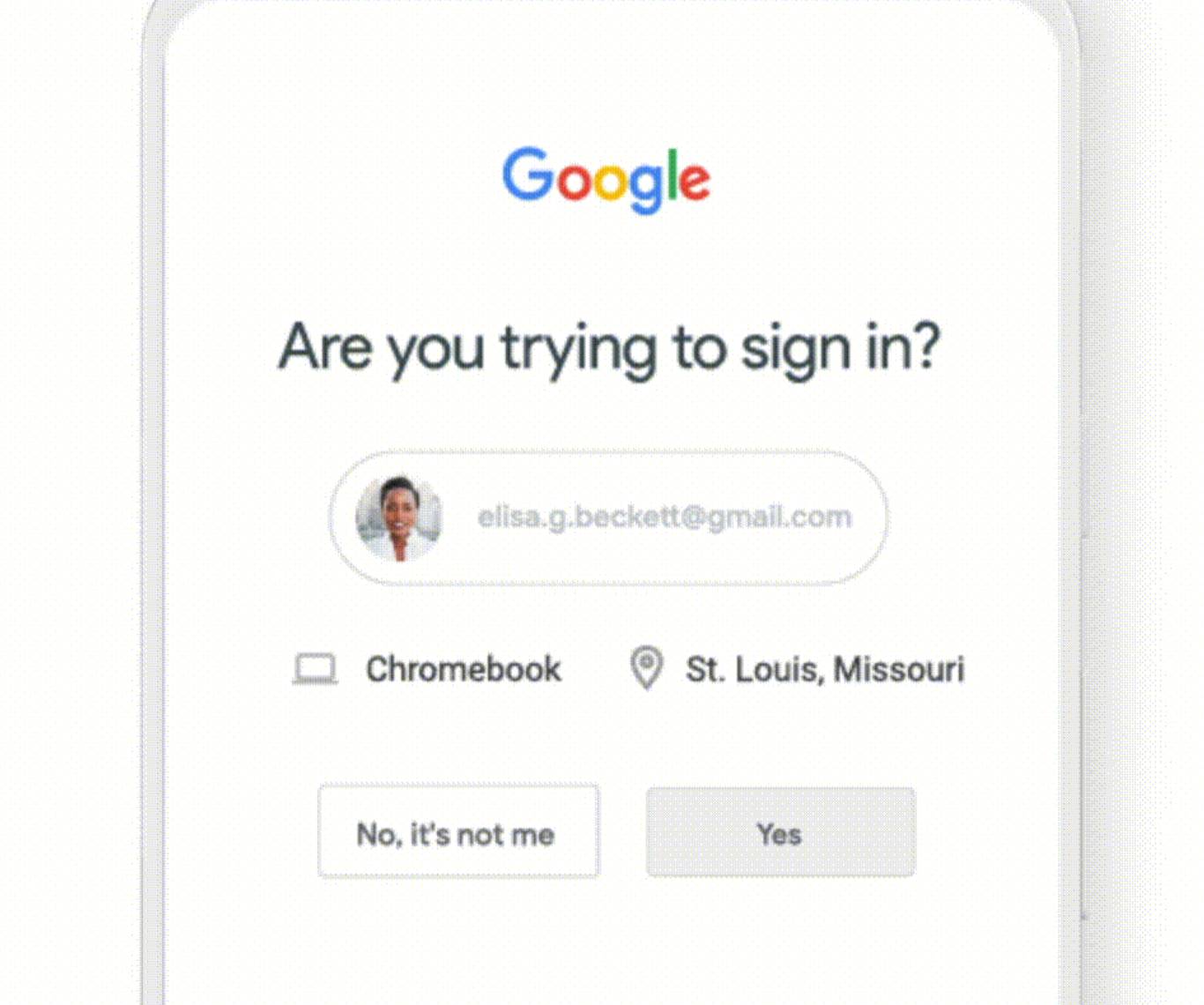
Encourage employees to use MFA for personal accounts because hackers may target your employees if they struggle to break directly into your company’s system.
5. Keep software up to date
Vendors often release patches to address security flaws, so keeping business software up to date ensures your systems stay protected from new threats.
Switch on automatic updates for operating systems, web browsers, antivirus software and any other business applications that allow them. Review your software quarterly or monthly to ensure everything runs the latest versions.
You’ll usually find the information you need in the settings menu or on an “about” screen, like this one for Mozilla’s Firefox browser:
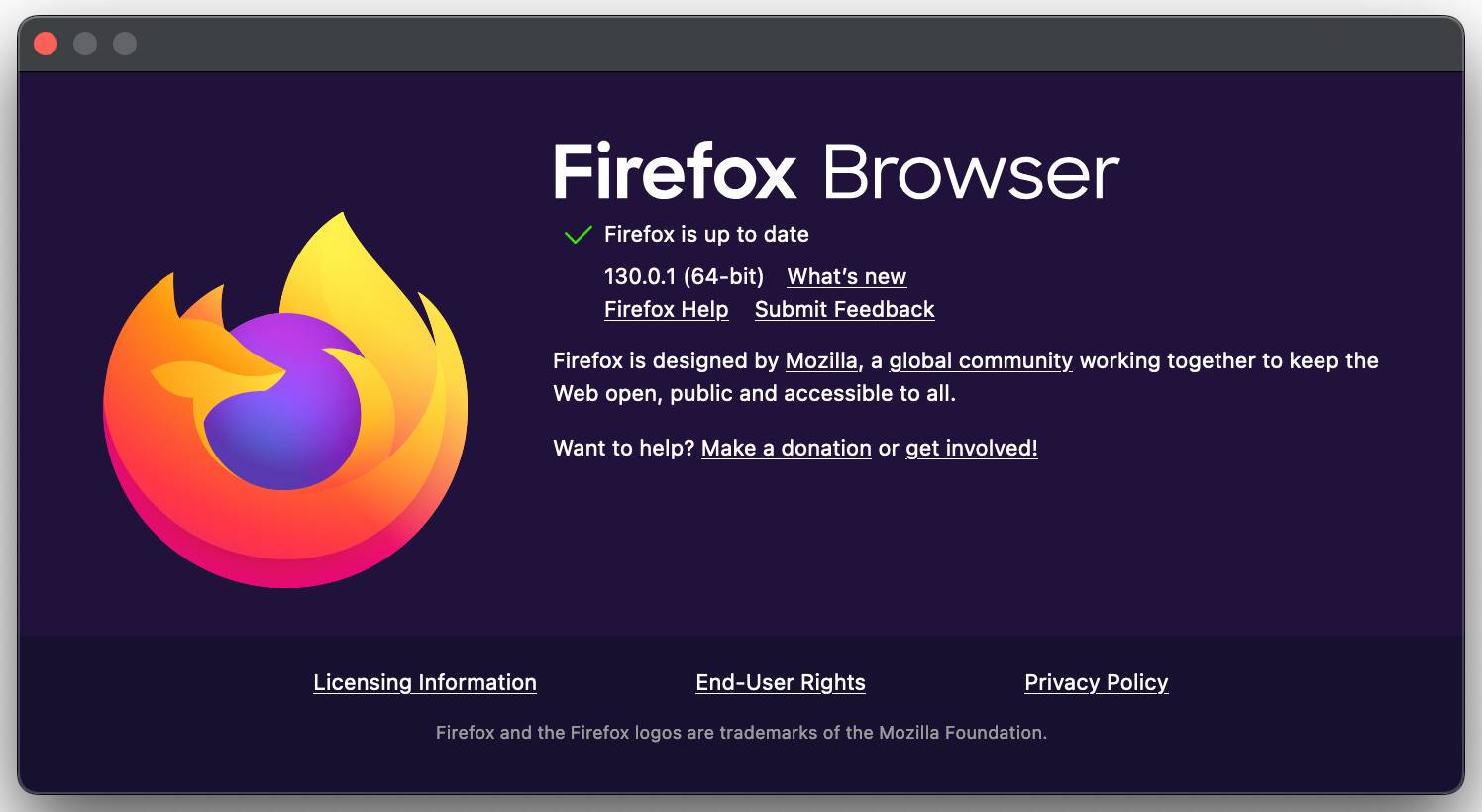
Security updates apply to mobile devices too. Apple and Google both provide downloadable patches for their iOS and Android smartphones. Ask staff to accept these as they become available.
6. Install and update firewalls
Firewalls act as barriers between your network and potential threats from the internet, including hackers, malicious traffic and unauthorized access.
They keep you safe by monitoring incoming and outgoing data, blocking anything suspicious while allowing legitimate communication.
Firewalls come from dedicated vendors and as add-ons for other tech (e.g., cloud and email services). Once you’ve installed or activated yours, configure its settings carefully and keep it up to date. If you aren’t sure how to set one up or maintain it, consult with an IT expert.
Recommended reading

Top 7 sales planning software for streamlining your sales strategy
How to protect your customer data
Protecting customer data helps you build trust and follow privacy laws. Here’s how to keep your most valuable information safe from unauthorized access.
7. Back up data regularly and test recovery
Backing up your data (e.g., copying it to a hard drive or the cloud) ensures you can retrieve important information after a cyberattack, hardware failure or human error. It’s the simplest way to minimize business disruption.
However, backing up alone isn’t enough. You must also test your backups regularly to ensure as quick and complete recovery is possible. Ideally, you’ll never need to use your backups, but knowing they work means you can focus on running your business.
Schedule automatic backups to a secure cloud storage platform or physical device and test the recovery process at least once a quarter to ensure you can restore data quickly.
8. Store data in a secure CRM
Customer relationship management (CRM) systems store and organize customer information, but some are more secure than others.
The best CRM solutions use encryption, permissions and regular software updates to protect your data.
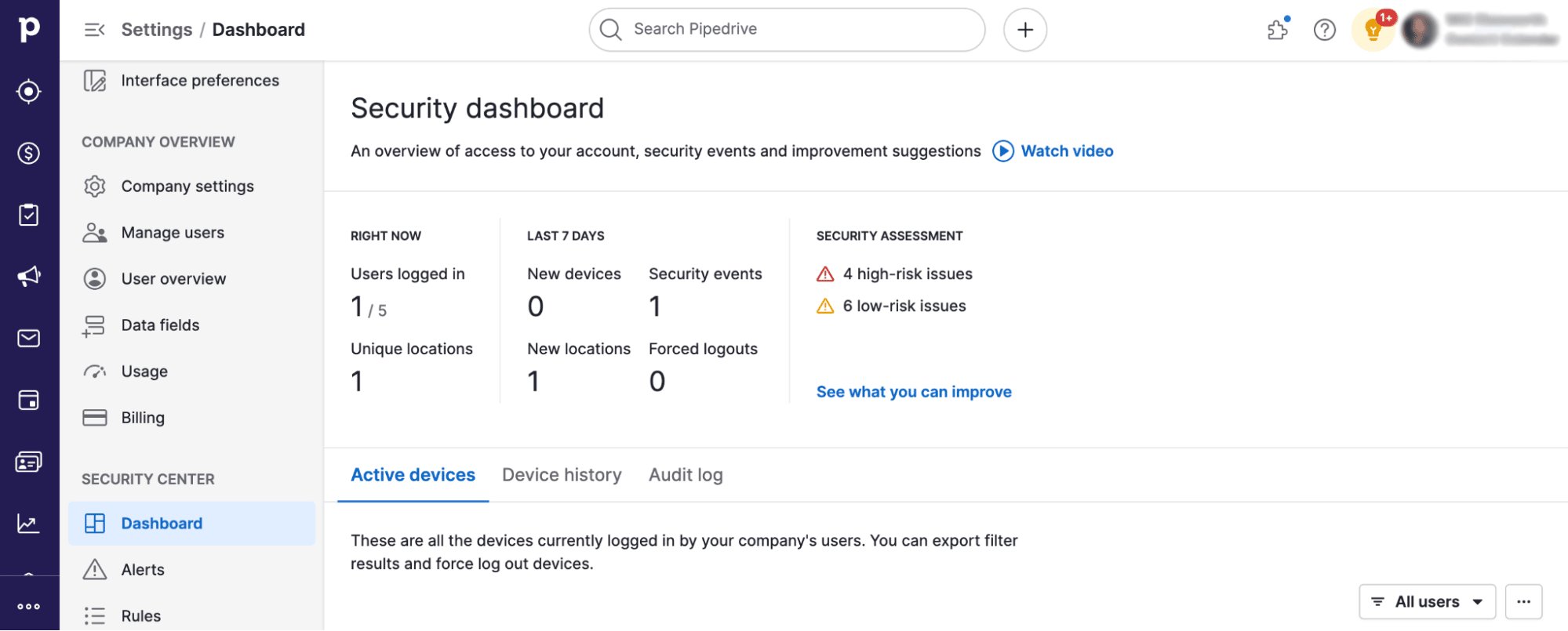
Look for these security features and ensure adherence to security guidelines like SOC 2, SOC 3 and ISO/IEC 27001 by checking the vendor’s trust center. Compliance shows a CRM vendor takes data protection seriously.
If your business handles sensitive data, check that the CRM complies with privacy laws like GDPR and other state- or region-specific acts. Breaches of these laws carry huge fines (e.g., the most severe GDPR infringements can cost businesses up to €20 million).
Lastly, review and update your CRM’s security settings monthly or quarterly and train your employees to use the CRM safely. Strengthening passwords and avoiding account sharing reduces the risk of data breaches.
9. Encrypt sensitive data
Encryption scrambles sensitive information so you can only read it with a unique key or code, making it useless to hackers.
Many business tools offer built-in encryption, either automatically or as an option, to protect sensitive data like payment details and personal information.
For instance, Pipedrive secures data using encrypted connections and stores backups on Amazon Web Services, a reliable and secure cloud platform.
Web browsers also use HTTPS to protect data in transit, so ensure any URLs you visit begin with “https” before using your company credit card or bank account online.
Encrypt hardware like laptops and phones to keep local data safe. Most operating systems have built-in encryption systems, like BitLocker for Windows and FileVault for macOS.
10. Restrict access to customer information
Only some people in your business need access to all customer data. Restricting access based on roles means authorized employees can view or modify sensitive information, reducing the risk of internal data breaches and accidental exposure.
Most secure business applications let you set up role-based access to control who can see specific data. In Pipedrive, it’s as simple as toggling permissions on or off for each individual.
Review and update those permissions regularly as roles change within your business to maintain security. For example, make it standard to turn access off for employees who leave.
Some systems go further, showing who accesses what and when. This visibility helps you spot vulnerabilities and react quickly to potential security incidents.
Recommended reading
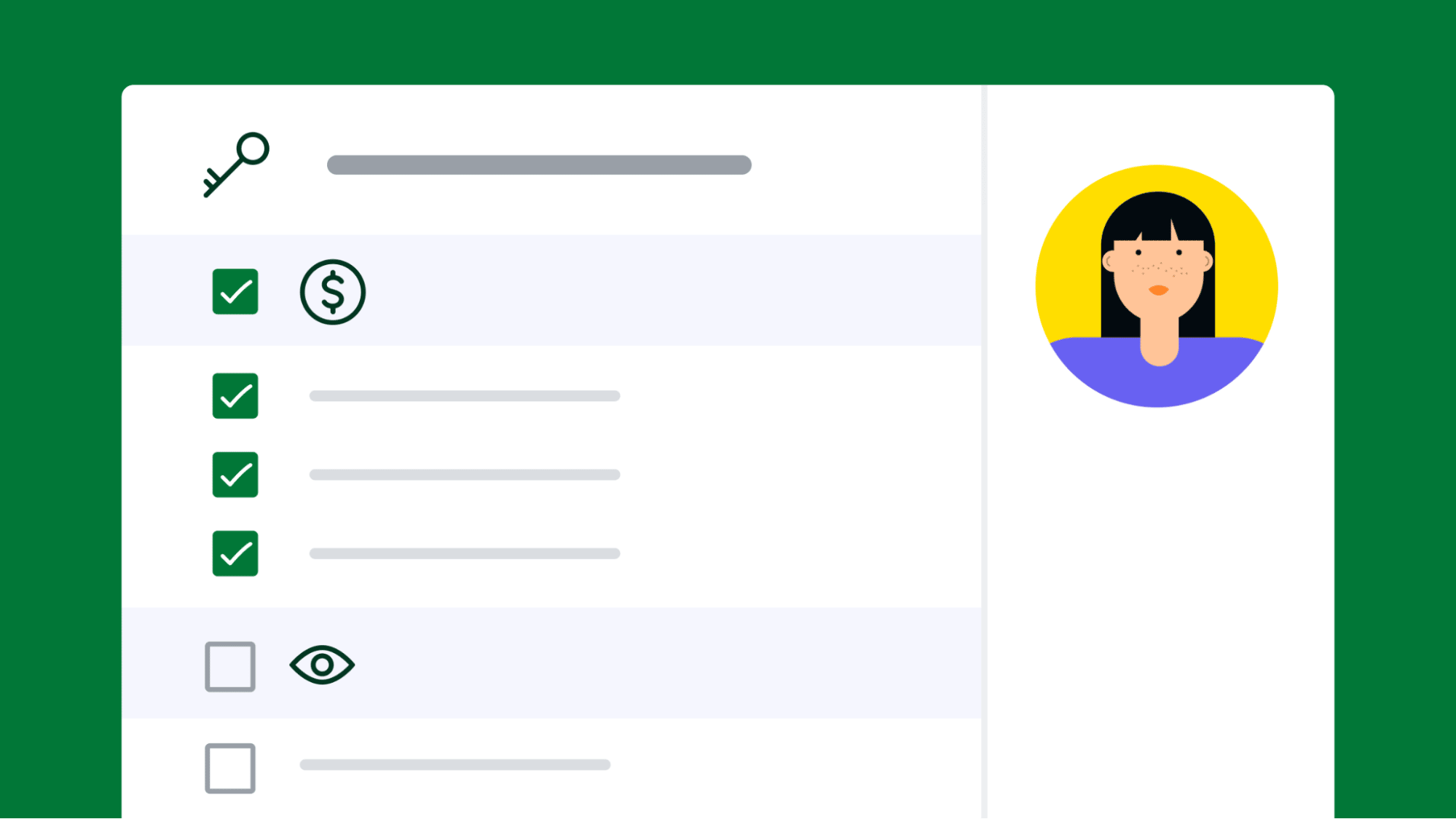
New Pipedrive permissions help bigger teams improve data quality
How to secure your company network
A secure network is the backbone of your business’s cyber safety. Reinforcing your defenses will prevent unauthorized access to transactions, data and communications.
Here’s how to ensure your network is robust.
11. Secure your Wi-Fi with WPA3
WPA3 is the newest and safest form of Wi-Fi encryption, which makes it more difficult for hackers to get into your network and steal your data.
WPA3 also uses forward secrecy to protect data transmitted in the past if someone steals your Wi-Fi password.
Check your router’s settings to see if WPA3 is on. If your router doesn’t support WPA3 (it may have the older WPA2 instead), upgrade it to reduce security risks.
Set up a separate guest Wi-Fi network for visitors and clients. They won’t have access to your central business systems if they connect to the guest network.
To do this, access your router’s guest network settings. The printed instructions are usually on your router.
12. Change your router passwords
Change your Wi-Fi’s default settings and passwords since hackers may know the formats and use them to breach your network.
Again, choose a robust and unique password that contains a mix of:
-
Upper and lowercase letters
-
Numbers
-
Symbols (i.e., special characters like $, % and @)
If a password is memorable to you (e.g., it contains your company name), a hacker will likely be able to crack it. A complex string of characters will be stronger. Keep the details safe in a password management app (e.g., LastPass) so you don’t forget it.
For example, “X7f!9Kv#Qp$2Lw” is more complicated to break than “HomeNet456”.
13. Install a virtual private network (VPN)
A virtual private network (VPN) encrypts your internet traffic, making it difficult for hackers to see or steal your data. It benefits employees who work remotely or access business systems via public networks.
Here’s an illustration of how VPNs work from Surfshark:
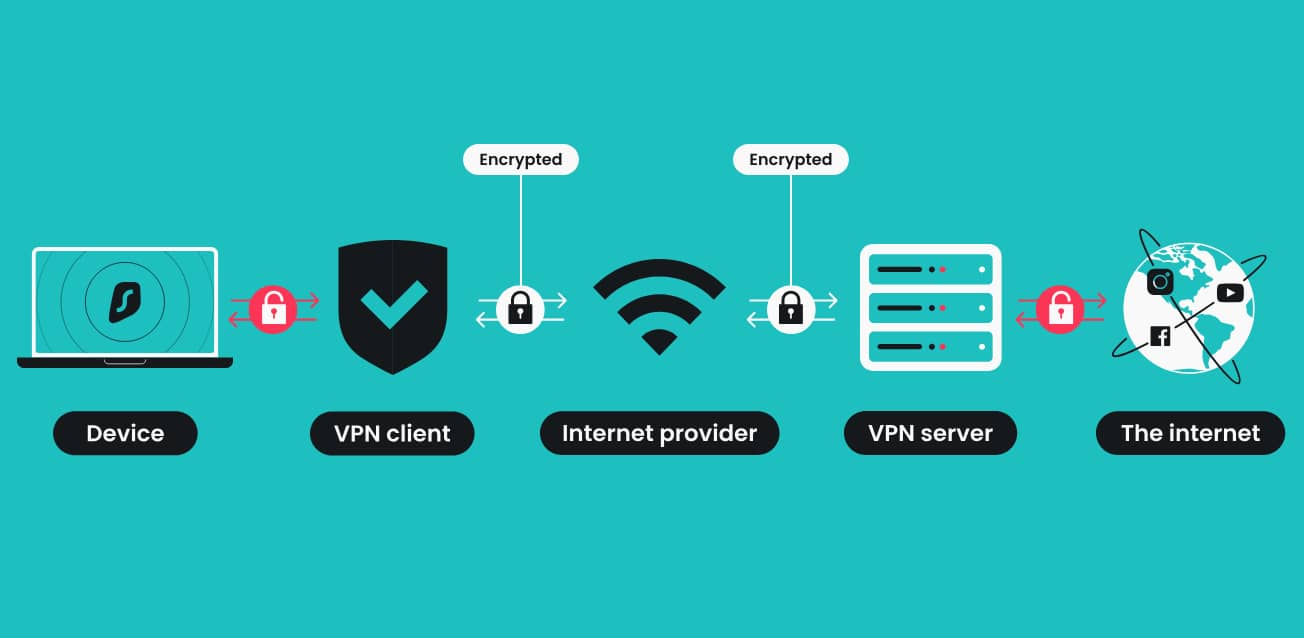
When choosing a VPN, look for one with strong encryption and a no-logs policy, which means the VPN won’t track your activity or hold your sensitive data.
Investing in a premium VPN service with great reviews is better since free options can be slower and less secure. Even some of the best-reviewed options cost as little as $5 per user per month – a small price for tighter information security.
Encourage employees to use the VPN whenever they’re accessing your business systems, even if they’re working from home. After all, you have less control over their routers and settings, so a VPN is an extra layer of protection.
14. Be vigilant against phishing scams
Phishing scams trick people into giving up sensitive information by posing as trusted sources like banks or colleagues.
The more vigilant and educated your team is about these scams (typically sent via email or text), the less likely they are to let hackers into your system.
Training your team to spot phishing attempts is more critical than ever. SlashNet found that malicious email activity rose 341% between October 2023 and March 2024.
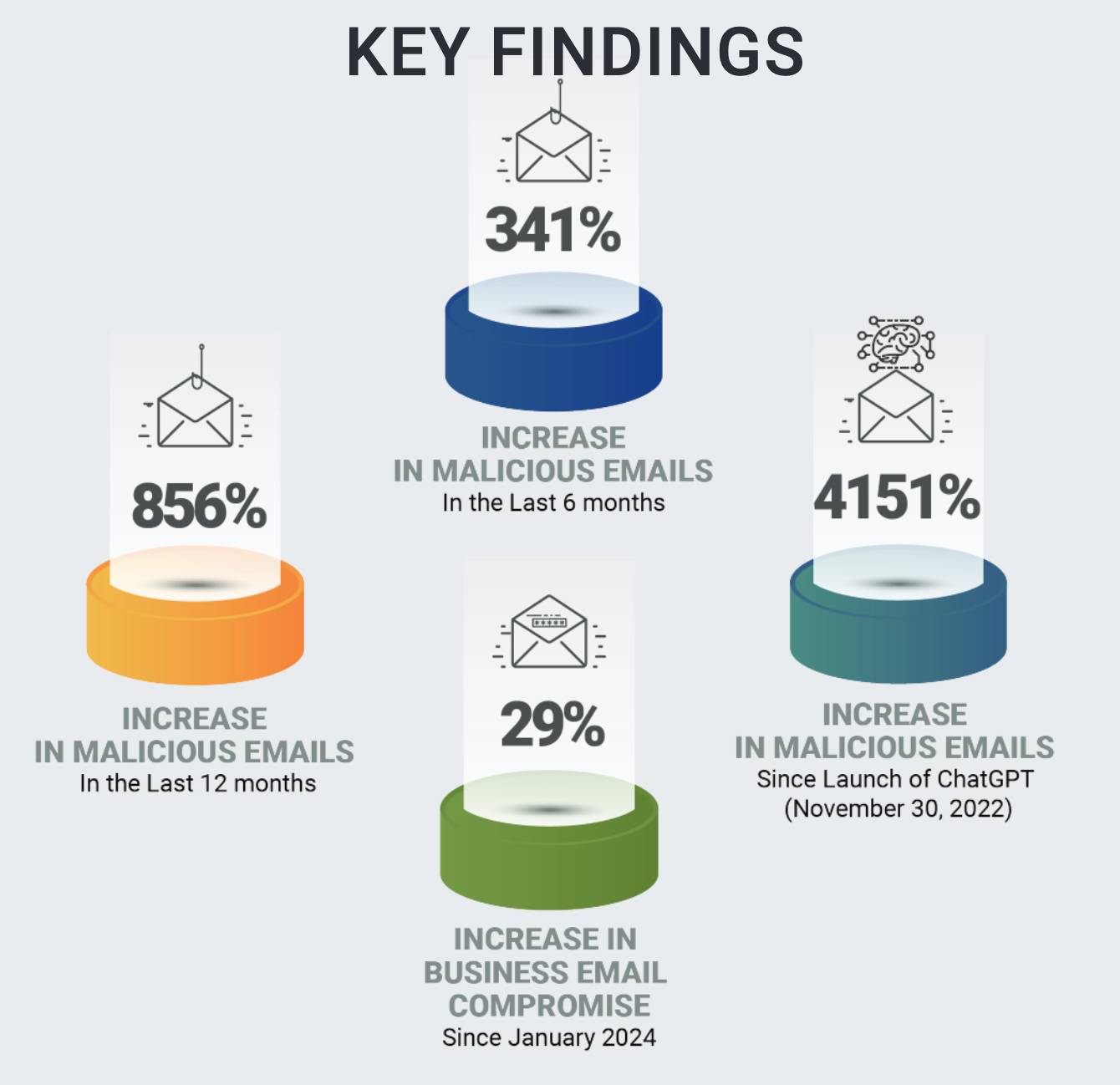
Increase vigilance by educating your employees on common signs of phishing, such as:
-
Suspicious email addresses. Look for misspellings and unfamiliar domains that don’t match the sender’s organization.
-
Urgent language. Be wary of messages that demand immediate action or threaten consequences.
-
Unexpected attachments. Don’t open attachments from unknown sources, especially if you weren’t expecting the file.
You can also use email filtering tools to block messages before they reach inboxes. These tools (offered by providers like Gmail) scan incoming emails automatically for known phishing patterns.
15. Use a secure email gateway
A secure email gateway, or SEG, filters incoming and outgoing emails to block threats like phishing, malware and spam. It scans emails for suspicious content and stops harmful messages from reaching your business.
Although most email clients have some built-in security features, a dedicated gateway like Proofpoint or Barracuda will use advanced monitoring technologies to keep your company safe.
For example, most secure gateways use virtual environments called sandboxes to test suspicious attachments before they reach your network. This step can catch new threats designed to bypass primary defenses.
Real-time monitoring is essential for any SEG solution because immediate detection gives hackers less time to exploit vulnerabilities. Other valuable features include customizable security policies that tailor protection to your business and detailed reporting to analyze threats.
Recommended reading

Spam filters for email: How they work and how to avoid them
How to use portable devices safely
Your company likely runs on a range of hardware, not just desktop computers. Safeguarding your mobile devices and laptops helps prevent sensitive information from falling into the wrong hands. Here’s how to do it.
16. Secure your company’s mobile devices
Protect all company mobile devices with strong passwords or biometric locks, such as fingerprints or facial recognition. These security measures are your first defense for protecting sensitive data in mobile CRMs and other applications.
Secure company mobile devices further by installing a reputable security app like McAfee or Bitdefender. Features like malware scanning and secure browsing will stop employees from opening malicious files and links that let hackers into your network.
Many small business cybersecurity solutions that include mobile protection allow you to monitor all threats and protective measures from a single interface, which is ideal for remote teams.
Train employees on safe mobile device practices, such as avoiding public Wi-Fi for business transactions (especially without a VPN) and reporting lost or stolen devices immediately.
17. Be wary of bring your own device (BYOD)
Letting employees use personal devices for work – known as bring your own device (BYOD) – increases security risks. You have less control over:
-
Usage, including what apps or services employees install and where they use them
-
Network connectivity, which might expose devices to unsecured or public networks
-
Security measures that might not meet your company’s standards
For example, employees may choose a weak password to protect their laptops. In doing so, they make it easier for hackers to access the business data on that device.
When feasible, supply company devices you can control from a central point. This approach gives you visibility into passwords and firewalls while allowing you to restrict the use of specific applications like social media or games.
If providing company devices isn’t an option, create a clear BYOD policy that includes rules for installing antivirus software and using strong passwords. You can also have employees separate personal and business data using apps.
18. Implement remote wipe features
Remote wipe features let you erase data on lost or stolen mobile devices, stopping thieves from accessing sensitive information.
Some operating systems come with built-in remote wipe features. For example, Google’s Find My Device app can lock and reset Android and Chromebook devices remotely. These essential solutions are ideal for small teams or businesses with only a few devices.
Consider investing in a dedicated mobile device management (MDM) system for larger teams with over 10 devices. This software will give you centralized control over security settings, remote management and monitoring so you don’t need to set each device up separately.
Recommended reading

Remote Selling: How to manage a sales team remotely
Final thoughts
Few aspects of small business management are as important as cybersecurity. Protecting your organization means staying current with new threats and best practices because keeping buyers’ trust is worth the effort.
Use the security tips in this guide to strengthen your defenses and don’t be afraid to seek expert help. Support from a cybersecurity firm that specializes in protecting small businesses will give you peace of mind and more time to focus on running your company.
